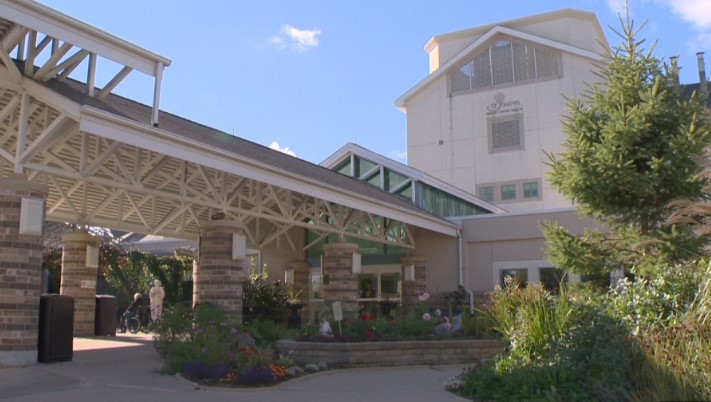In a harmonious blend of art, nature, and community spirit, a captivating collaborative sculpture project recently unfolded at the University of Guelph, showcasing the profound connection between creativity, healing, and the environment.
The Genesis of a Healing Journey
At the heart of this endeavor were artists Dawn Matheson and Agnes Niewiadomski, who orchestrated a captivating “How To Draw A Tree Wellness Circle” event on Johnston Green. The premise was simple yet profound: utilizing sticks as a medium, participants joined forces to craft a sculpture that symbolized not just artistic expression but also a deeper connection to nature’s soothing embrace.
For Matheson, the project held personal significance, as trees had played a pivotal role in her own mental health journey. Amidst life’s challenges, she found solace and tranquility in the presence of trees, describing the act as grounding and therapeutic.
From Concept to Creation: A Community Unites
The event drew a vibrant crowd of approximately 50 individuals eager to engage in this collaborative art venture. Guided by Matheson and Niewiadomski’s artistic vision, participants contributed sticks to the evolving sculpture, each adding their unique touch to the collective masterpiece.
Among the enthusiastic participants were students from Guelph Collegiate Vocational Institute (GCVI), led by Gerard Gouchro, who saw the project as an opportunity to challenge themselves creatively while contributing to a larger narrative of wellness and environmental stewardship.
Beyond Art: Cultivating a Connection
The project’s inception stemmed from a desire to foster engagement within the wellness circle. What began as an art initiative evolved into a multifaceted exploration involving artists, sound composers, students, poets, and ecopsychologists. Together, they curated guided sound walks in the Arboretum, intertwining narratives of personal tree connections with auditory experiences.
Each participant planted a tree at the wellness circle, symbolizing their unique bond forged during the project. This collaborative effort aimed not only to create art but also to nurture a profound connection between individuals and the natural world.
A Living Artwork: Evolving with Nature
The stick sculpture, a testament to communal creativity, will continue to evolve over the coming weeks, inviting anyone to contribute and shape its narrative. Matheson embraces the impermanence of the art, viewing it as a dynamic, process-based expression rather than a static end product.
The materials used for the sculpture were sourced sustainably, utilizing pruned sticks from the Arboretum to minimize waste and celebrate nature’s offerings. Justine Richardson, director of the Arboretum, highlighted the project’s innovative approach to repurposing natural materials.
Bridging Crises: Mental Health and Environmental Awareness
Beyond its artistic allure, the project carries a poignant message about the intertwined challenges of mental health and environmental sustainability. Matheson articulates the dual crises facing humanity—mental illness and climate change—underscoring the project’s mission to address these pressing issues through creative collaboration and ecological mindfulness.
Researchers from the University of Guelph will study the project’s impact, examining how fostering a deeper connection to nature can benefit individual well-being and environmental consciousness.
A Call to Action: Embracing Creativity, Embracing Nature
As the art piece adorns Johnston Green, inviting further contributions, it serves as a tangible reminder of the symbiotic relationship between humanity and the natural world. Matheson’s pondering question—how do we derive inspiration from trees while reciprocating their nurturing presence—is echoed in every stick added to the evolving sculpture.
In a world teeming with challenges, this collaborative art project stands as a beacon of hope and creativity, urging us to embrace nature’s healing embrace and contribute meaningfully to its preservation.



